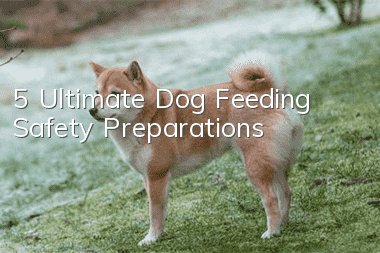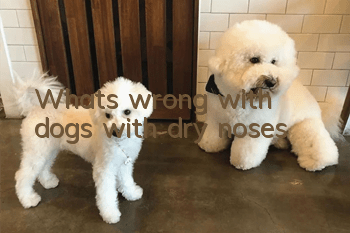5 Ultimate Dog Feeding Safety Preparations

Earlier this year, the dog food brand Purina faced a huge lawsuit because its ingredients were found to contain harmful substances. Reviews.com decided to find out the root causes of all feeds. For the sake of pet health, it examined 2,219 formulas and 115 brands. After 7 researchers and 20 experts analyzed 72 articles and literature, it also investigated the practical experiences of 300 pet owners. The following conclusions were reached:
1. Unhealthy and unsafe dog food contains bad ingredients!
Don’t think that only my country can produce foods that are harmful to health. Although the U.S. FDA food certification will check the quality of food ingredients, in fact, many ingredients of feeds sold on the market are unsafe! If the ingredients contain meat, meat powder or It is the product of a carcass waste processing plant, and the source of this meat cannot be traced at all. Rotten meat from zoos, grocery stores, or even animals that have been run over on the roadside might be added!
In the most recent batch of defective products that were recalled, ingredients such as melamine were found, and many famous brand feeds that killed about 2,200 dogs also contained mold, salmonella, aflatoxin, plastic and Listeria. Special bacteria and other deadly ingredients. Even if there are no poisons, bacteria, or foreign substances in its contents, dog food still needs a uniform blend of nutrients to be qualified. Cereal-based foods have recently become the culprit of dog obesity, and the complete, unprocessed ingredients often cause gastrointestinal problems in dogs!
2. Feeders should know which food ingredients to look for and which ones to avoid...
6 yes/5 no~
6 want...
In terms of complete proteins: fish, chicken, beef, duck, liver and eggs.
Take whole grains as an example: oats and quinoa.
In terms of healthy nutrients: Omega-3 fatty acids, glucosamine and chondroitin.
Meaningful seals: various organic certifications.
Natural preservatives: Vitamins C and E.
Take vegetables and fruits as an example: sweet potatoes, peas and radishes.
5Don’t...
Avoid some chemicals: BHA, BHT and Ethoxyquin 3 preservatives, propylene glycol and sodium selenite.
Avoid undeclared proteins such as meat, meat meal and various by-products.
Avoid grain satiety additives: corn, wheat, soybeans and beet pulp.
Avoid: Products made in China and from animal waste processing plants.
Avoid: onions, grapes, garlic and avocados.
Note: A high-protein diet helps young children liveDogs with high motivation, but for older dogs, low protein meals should be the main meal.
3. No food is perfect!
Dry foods tend to be portable and last longer, but they often contain processed ingredients, satiety additives, and preservatives. Ordinary food with moisture can provide a more complete meal and is easier for dogs to absorb. However, the disadvantage is that it is easy to spoil, and it is more difficult for the owner to prepare such a fresh meal. Dehydrated food is more nutritious than dry food and requires less processing, but it also requires preparation and is difficult to carry.
Raw food is fresh and pure, but it must be handled with care and it is troublesome to buy frequently. Home-made food is controlled, fresh and of high quality, but making it yourself still requires sufficient knowledge and is quite time-consuming. It is actually quite difficult to have a perfect nutritional formula ratio!
4. Dogs’ nutritional needs also vary depending on their growth stage!
Everyone should know this point, so I’ll just mention it again: growing puppies need to be fed frequently, and a lot of protein and calcium are often added to the diet. However, for large dogs, babies may develop bone problems if they consume a diet high in calcium. As for older dogs with joint pain and other problems, they must consume large amounts of glucosamine and chondroitin.
5. The formula in food is the most important, and the brand is really only second!
To find the best dog food, the 2,219 recipes in the study were sifted to remove those that did not list meat protein as a primary ingredient, grain-based satiety additives, beet pulp, sugars, by-products and sauces. Materialist. Then, many brands were excluded due to bad records such as ingredients or product recalls. In the final stage, many large corporate brands and low-quality manufacturing countries will also be eliminated.
In the end, the results of the research and screening are really amazing: only 25 brands of 119 formulas meet the required standards! Quickly scroll to the bottom of this link to check whether the feed you eat meets the standards!
The pet dog at home is the treasure of every owner. It would be really terrible if the dog really became a victim due to negligence in daily diet! Share it quickly and let everyone know!
- How long does it take for dogs to be dewormed before all the worms are killed?
- Signs of depression in dogs, come and see if your dog has it
- What should you do when faced with "fungi + mites + inflammation"?
- Select competition-grade Husky puppies based on bone proportions
- Illustration of the correct ways and precautions to greet your dog
- Dogs have dandruff and hair loss
- What to do if Teddy can’t digest dog food
- Will the ancient shepherd dog recognize its owner?
- Does Corgi recognize its owner?
- Can a dog recover after being hit by a car and unable to stand on its hind legs?



